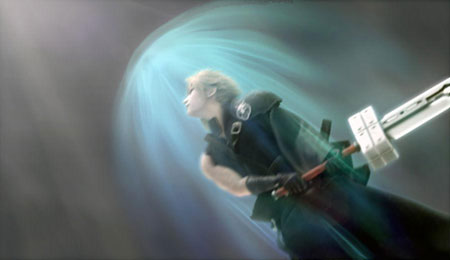
Final Fantasy VII is a perennially popular game, but one that is almost as fashionable to hate. It’s true that it has its flaws and probably isn’t even the best Final Fantasy game, let alone the best RPG ever made, and it’s probably equally true that the reason for its popularity is because it was many players’ first RPG. But even so, there aren’t many games that have spawned a CGI feature film, an anime short film, several novellas and four spin-off games, and I think the only Final Fantasy that would be more anticipated than XIII would be the much-rumoured FFVII remake. It really is a franchise in its own right.
Anyway, it was the latest chapter in the Compilation of Final Fantasy VII, Crisis Core, that originally got me interested in revisiting this world. The PSP game is very impressive, but I got the feeling that some things were going over my head, given that I’d never finished Final Fantasy VII. I hadn’t finished a Final Fantasy game full stop, with a save at the end of Final Fantasy IV Advance being the closest I’ve got. Yes, I’m ashamed.
Back when it came out I didn’t have a PlayStation and so had little opportunity to play it – I don’t think I even got out of Midgar around release – and my most successful attempt so far was almost three years ago, when I bought a new NTSC copy and actually made it to disc 2 (OMG Aeris dies!!!1) before petering out somewhere on Gaea’s Cliff, about 19 hours in. With custom firmware PSPs supporting multi-disc PS1 games, I worked out how to get my original PS1 save ported to the PSP – it involves a chipped PS2 and some homebrew voodoo -and, after familiarising myself with the abilities that I’d left on the characters, I powered on through the previous sticking point. Continue reading Revisiting Final Fantasy VII


